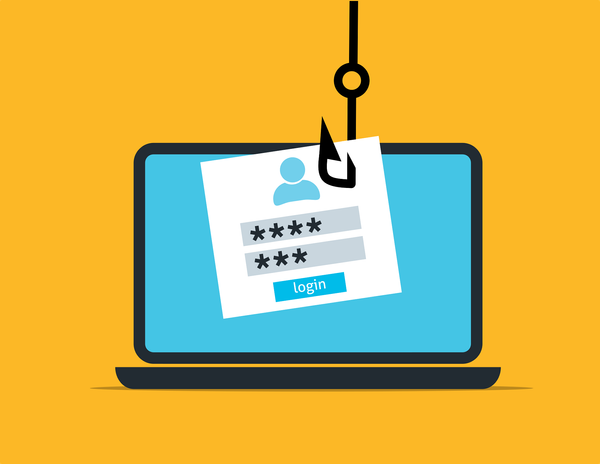Loan Scams Uncovered. Protect Your Identity and Money

Loan scams prey on people when they are most vulnerable, especially during times of financial hardship. As families struggle to cope with rising living expenses caused by inflation and economic instability, scammers exploit those seeking financial help, ensnaring them in a cycle of debt.
In 2023, over $10 billion was lost to fraud in the U.S. Although investment scams account for the highest reported losses, a significant portion is also attributed to loan scams.
What Is Loan Fraud?
Loan fraud involves scammers posing as legitimate lenders, offering fake loan deals to individuals in financial need. Scammers target people looking for fast financial solutions—whether seniors on fixed incomes, families living paycheck to paycheck, or individuals with poor credit.
The methods scammers use vary, but they all share the same goal: to steal your personal information or money. Some scammers may even take out loans in your name once they've gathered enough details, such as your Social Security number, passport information, or bank account numbers. Understanding these schemes and warning signs can help you make better financial choices and safeguard your personal data.
Top Loan Fraud Scams to Watch Out For
Here are some of the most common types of loan fraud:
- Loan Fee (Advance Fee) Fraud
This is one of the most common loan scams. The scammer poses as a legitimate lender and offers you a loan with seemingly no strings attached. However, before you can access the funds, they'll ask for an upfront payment—often described as an "insurance fee," "admin fee," or "deposit." Once you pay, the scammer disappears, leaving you without the loan and money you gave.
These scammers typically request payment through hard-to-trace methods like cryptocurrency, wire transfers, or even gift cards, making it nearly impossible to recover your money.
Related: Advance Fee Scams: What They Are, How to Spot Them and Safety Tips
2. Small Business Loan Fraud
In this scam, fraudsters use stolen identities to apply for small business loans from banks or government programs, such as the Small Business Administration (SBA). They may also exploit relief funds intended for struggling businesses. If you're a small business owner and receive a notification about a loan you didn't apply for, it could mean someone has fraudulently used your information.
Related: Top 10 Scams Targeting Very Small Businesses: How to Stay Safe and What to Do If You're Scammed
3. Debt Consolidation Scams
Debt consolidation might seem like a great way to get on top of your finances, but scammers take advantage of this. They promise to consolidate your debt but require an upfront fee or ask you to stop contacting your creditors—both major red flags. Always be cautious if a lender suggests you cut off communication with your current creditors.
Related: Is Your Debt Collector Real or a Fraudster? Learn How to Tell
4. Student Loan Scams
Students and recent graduates struggling with education debt are also targets for scammers. Fraudsters promise debt relief or reduced payments in exchange for an upfront fee. They may also pretend to negotiate with your loan provider, but instead, they steal your personal information and worsen your financial situation.
Related: Beware of Scholarship Scams: Protect Yourself and Your Peers.
5. Loan Phishing Scams
Scammers may trick you into providing sensitive information, like your Social Security number or bank account details. They may ask you to fill out forms that look official, but these forms are designed to steal your information for identity theft. Often, phishing scams are combined with other types of fraud, such as loan fee scams, to maximize the damage.
Related: Phishing Scams: How to Identify and Avoid Them
6. Fake Loan Apps
Some scammers even create fake loan apps, targeting Android users through social media ads. These apps look legitimate and often imitate well-known financial institutions. Once downloaded, they ask for personal information, like bank details and ID cards.
For example, so-called "SpyLoan" apps lure victims with promises of quick loans via SMS messages or ads on social media platforms like X (formerly Twitter) and Facebook. These apps typically require you to confirm your phone number and then request sensitive data like your address, bank account details, and even selfies with your ID. This information is used for identity theft, and scammers may go as far as blackmailing or threatening you.
7. Payday Loan Scams
These scams target individuals in urgent need of cash, especially those with bad credit scores. Scammers promise quick approval with little documentation or credit checks. However, once you provide your personal information—like Social Security numbers or bank account details—scammers disappear and may use your information to impersonate you.
8. Loan Repayment Fraud
In these schemes, scammers impersonate legitimate loan companies and contact you, claiming that you've missed a repayment. They may send fake emails or letters demanding immediate payment with penalties to bank accounts they control. The pressure to act quickly can cause people to fall for this scam, especially if they already have multiple loans.
Related: Top 9 Utility Scams: Tips to Recognize and Avoid Them
9. Identity Theft Loans
Scammers use stolen personal information found on the internet or dark web, such as your tax returns or Social Security number, to apply for loans in your name. They max out the loans, leaving you to foot the bill. Common examples include:
- Credit Card Fraud: A scammer uses your identity to open a credit card account, raises debt, and leaves you with the bill.
- Auto Loan Fraud: Scammers apply for car loans using stolen identities, often leaving victims with hefty debts.
- Mortgage Fraud: Scammers use your personal information to take out loans against your property or apply for mortgages in your name. In severe cases, they can even sell your home to unsuspecting buyers using fake ownership documents.
How to Spot Loan Scams: Red Flags to Watch For
Recognizing the signs of a loan scam is the best way to avoid becoming a victim. Here are some red flags:
- Guaranteed Approval: Legitimate lenders will always check your financial situation before approving a loan. If you're promised a loan without any assessment, it's likely a scam.
- Upfront Fees: If a lender asks for payment before providing a loan, be cautious. Authentic lenders typically deduct fees from the loan or include them in the repayment terms.
- Pressure to Act Fast: Scammers often push for immediate action with limited-time offers or threats of penalties. Take your time to research before making any decisions.
- Unsolicited Offers: Be wary of loan offers that arrive unexpectedly, especially through phone calls, text messages, or social media.
- Vague Contact Information: Legitimate lenders provide clear and accessible contact details. If you're struggling to find a physical address or verified phone number, think twice.
- No Registration or Licensing: Check if the lender is registered and licensed in your state. This information is typically easy to verify through your state's financial authority.
How to Protect Yourself from Loan Fraud
To stay safe, keep these precautions in mind:
- Research the Lender: Always research companies offering loans, especially if you've never heard of them before.
- Avoid Upfront Payments: Never pay any fees upfront without receiving official loan documentation.
- Use Security Software: Keep your devices protected with anti-malware tools from a reputable vendor and enable multi-factor authentication (MFA) to prevent unauthorized access.
- Be Cautious with Apps: Avoid downloading apps that request excessive permissions, and read reviews before installing anything.
- Check Your Personal Information: Use services like Bitdefender Digital Identity Protection to monitor if your personal information is exposed online.
- Verify loan offers with Scamio, our AI-powered scam detection tool. Before filling in any form or replying to an unsolicited email asking for personal information to apply for a loan, send it to Scamio. You can send it any texts, messages, links, QR codes, or images, and it will analyze them to determine if they are part of a scam. Scamio is free and available on Facebook Messenger, WhatsApp, and your web browser. You can also help others stay safe by sharing Scamio with them in France, Germany, Spain, Italy, Romania, Australia, and the UK.
What to Do If You’ve Been Scammed
If you suspect you've fallen victim to loan fraud, take the following steps immediately:
- Gather Evidence: Save any emails, texts, or documents that could help with an investigation.
- Report the Fraud: File a report with the FTC at IdentityTheft.gov, and consider contacting local law enforcement.
- Notify Lenders and Banks: Inform any impacted financial institutions about the fraud and dispute any loans taken out in your name.
- Place a Fraud Alert or Credit Freeze: This will prevent scammers from taking out additional loans using your identity.
- Protect yourself from further identity theft with Bitdefender Digital Identity Protection. It keeps track of your sensitive data, alerts you if it’s breached or appears on the Dark Web, and provides clear steps to protect yourself.
FAQs About Loan Scams
How Do People Do Loan Scams?
Loan scams involve fraudsters posing as legitimate lenders. They trick victims into sharing personal information, such as Social Security numbers or bank details, or paying upfront fees for loans that don't exist. Scammers may use phishing tactics, fake websites, or unsolicited phone calls to gain your trust.
Can a Scammer Get a Loan in My Name?
Yes, scammers can get a loan in your name if they obtain your personal information through identity theft. This can happen when sensitive data, such as your Social Security number or financial information, is stolen via phishing, hacking, or breaches. Once they have your details, fraudsters can apply for loans, leaving you responsible for the debt. Protect yourself by monitoring your credit report regularly, using strong passwords, and avoiding sharing personal information online or over the phone with unverified parties.
How to Identify a Fake Loan?
Watch out for red flags, such as lenders who ask for upfront fees, guarantee loan approval without a credit check, or pressure you to act quickly. Fraudulent loan offers often come with poor grammar in emails or texts and suspiciously high interest rates. Always verify the legitimacy of the lender by checking online reviews, ensuring they are registered with state authorities, and confirming their contact details.
tags
Author
Cristina is a freelance writer and a mother of two living in Denmark. Her 15 years experience in communication includes developing content for tv, online, mobile apps, and a chatbot.
View all postsRight now Top posts
How to Protect Your WhatsApp from Hackers and Scammers – 8 Key Settings and Best Practices
April 03, 2025
Outpacing Cyberthreats: Bitdefender Together with Scuderia Ferrari HP in 2025
March 12, 2025
Streamjacking Scams On YouTube Leverage CS2 Pro Player Championships to Defraud Gamers
February 20, 2025
How to Identify and Protect Yourself from Gaming Laptop Scams
February 11, 2025
FOLLOW US ON SOCIAL MEDIA
You might also like
Bookmarks







